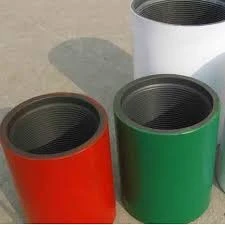- Afrikaans
- Albanian
- Amharic
- Arabic
- Armenian
- Azerbaijani
- Basque
- Belarusian
- Bengali
- Bosnian
- Bulgarian
- Catalan
- Cebuano
- Corsican
- Croatian
- Czech
- Danish
- Dutch
- English
- Esperanto
- Estonian
- Finnish
- French
- Frisian
- Galician
- Georgian
- German
- Greek
- Gujarati
- Haitian Creole
- hausa
- hawaiian
- Hebrew
- Hindi
- Miao
- Hungarian
- Icelandic
- igbo
- Indonesian
- irish
- Italian
- Japanese
- Javanese
- Kannada
- kazakh
- Khmer
- Rwandese
- Korean
- Kurdish
- Kyrgyz
- Lao
- Latin
- Latvian
- Lithuanian
- Luxembourgish
- Macedonian
- Malgashi
- Malay
- Malayalam
- Maltese
- Maori
- Marathi
- Mongolian
- Myanmar
- Nepali
- Norwegian
- Norwegian
- Occitan
- Pashto
- Persian
- Polish
- Portuguese
- Punjabi
- Romanian
- Russian
- Samoan
- Scottish Gaelic
- Serbian
- Sesotho
- Shona
- Sindhi
- Sinhala
- Slovak
- Slovenian
- Somali
- Spanish
- Sundanese
- Swahili
- Swedish
- Tagalog
- Tajik
- Tamil
- Tatar
- Telugu
- Thai
- Turkish
- Turkmen
- Ukrainian
- Urdu
- Uighur
- Uzbek
- Vietnamese
- Welsh
- Bantu
- Yiddish
- Yoruba
- Zulu
what are the differences between casing and tubing?
Understanding the Differences Between Casing and Tubing in Oil and Gas Operations
In the world of oil and gas drilling, two critical components are casing and tubing. While both are essential for the successful extraction of hydrocarbons from the earth, they serve different purposes and have unique characteristics. This article aims to explore the key differences between casing and tubing, delving into their functions, materials, installation processes, and advantages.
What is Casing?
Casing is a series of pipes that are installed in an oil or gas well to provide structural integrity and protect the wellbore from collapse. The casing is typically made of steel and is installed during the drilling process. It prevents contaminants from entering the well and protects groundwater from the hydrocarbons being extracted. Casing also acts as a barrier to separate different geological layers, ensuring that fluids do not migrate from one zone to another.
Casing is installed in sections, with each section being cemented in place to secure it against the formation. The cementing process not only holds the casing in position but also helps to create a seal that prevents the flow of fluids between different geological formations. There are several types of casing, including surface casing, intermediate casing, and production casing, each serving a specific function depending on the depth of the well and the characteristics of the rock being drilled.
What is Tubing?
In contrast, tubing refers to the smaller-diameter pipes that are installed inside the casing after the well has been drilled and cased. The primary function of tubing is to transport the oil or gas from the reservoir to the surface. Tubing is designed to withstand high pressures and is typically made from high-strength carbon steel or other alloys that can resist corrosion and wear.
Unlike casing, tubing is not cemented in place; instead, it is secured at the top of the wellhead and can be easily removed and replaced as needed. This flexibility allows operators to conduct maintenance or replace worn tubing without needing to drill a new well. Tubing also facilitates the installation of various downhole tools, such as pumps and sensors, which are critical for optimizing production rates.
what are the differences between casing and tubing?

Key Differences
1. Functionality The primary difference between casing and tubing lies in their functions. Casing provides structural support and protection for the wellbore, while tubing serves as the conduit for transporting hydrocarbons from the reservoir to the surface.
2. Installation Process Casing is installed during the drilling phase and is cemented in place to form a barrier, while tubing is installed later and is not cemented, allowing for easier maintenance.
3. Material and Design Both casing and tubing are made from steel, but they differ in design. Casing is often thicker and designed to handle external pressures and forces, whereas tubing is typically lighter with a thinner wall to facilitate the flow of fluids.
4. Pressure Resilience Both components are designed to withstand significant pressure; however, tubing is specifically engineered to handle the high pressures found within the production zone. The tubing must also withstand the corrosive nature of the fluids being transported.
5. Type and Size Casing comes in various sizes and types, such as surface casing and production casing, depending on the well's depth and the formations being encountered. On the other hand, tubing is generally of a smaller diameter and is specifically tailored for efficient fluid transport.
Conclusion
In summary, while casing and tubing are both integral components of oil and gas wells, they serve distinct purposes and possess different characteristics. Understanding the differences between the two is crucial for engineers and operators in the industry. Casing provides structural integrity and protection, while tubing facilitates the efficient transport of hydrocarbons from beneath the earth's surface to the production facilities. By recognizing the unique roles of casing and tubing, industry professionals can optimize well design and ensure safe and effective hydrocarbon extraction.
-
Tubing Pup Joints: Essential Components for Oil and Gas OperationsNewsJul.10,2025
-
Pup Joints: Essential Components for Reliable Drilling OperationsNewsJul.10,2025
-
Pipe Couplings: Connecting Your World EfficientlyNewsJul.10,2025
-
Mastering Oilfield Operations with Quality Tubing and CasingNewsJul.10,2025
-
High-Quality Casing Couplings for Every NeedNewsJul.10,2025
-
Boost Your Drilling Efficiency with Premium Crossover Tools & Seating NipplesNewsJul.10,2025







